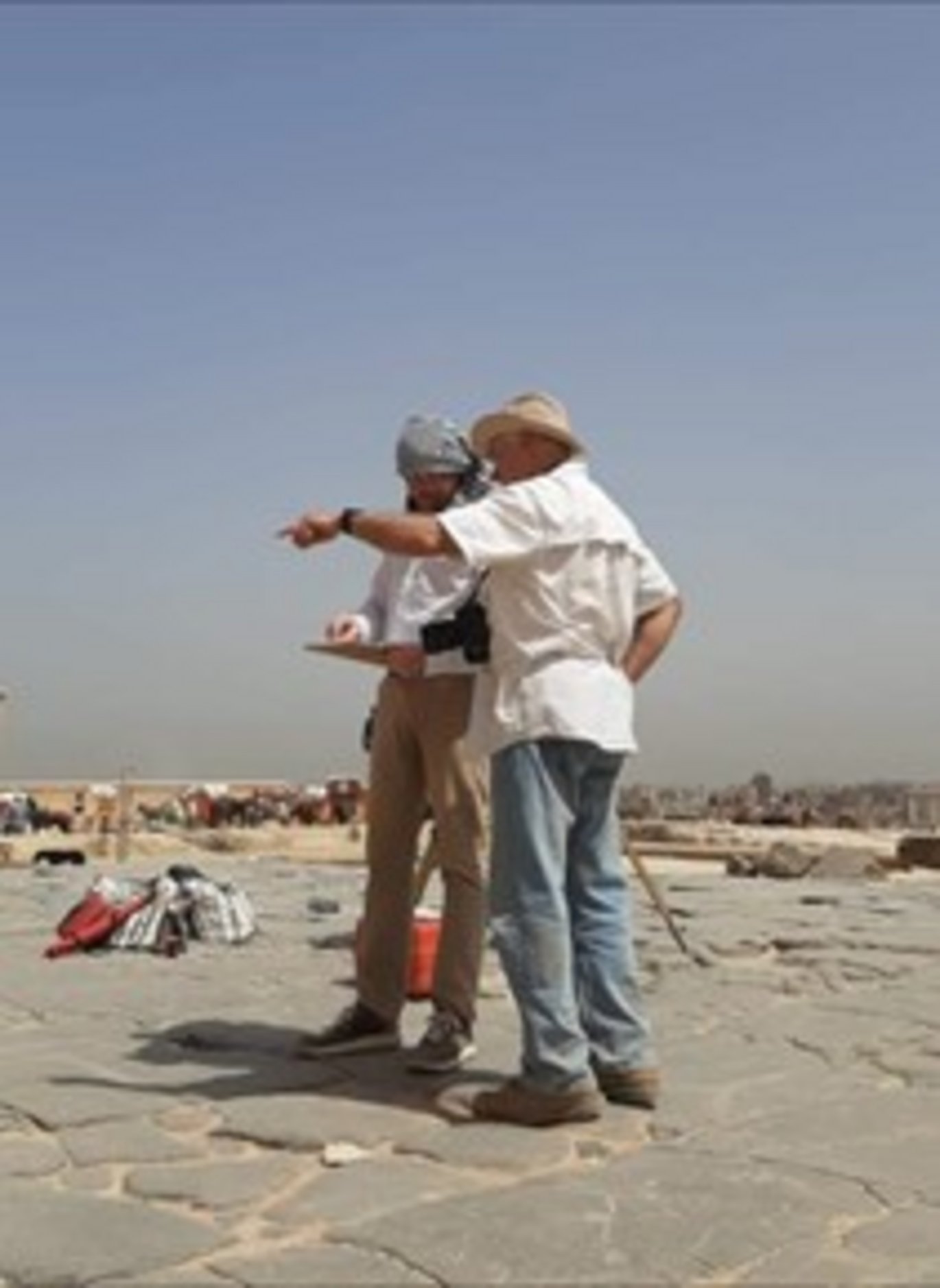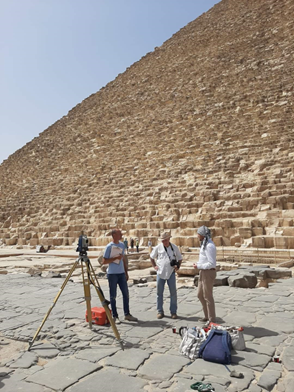New project: 3D Laser Scanning Survey of the Great Pyramid Building Site in Giza, Egypt
Archaeologists from UrbNet and Museum of Southwest Jutland will assist the Ancient Egypt Research Associates (AERA) in creating detailed 3D documentation of newly uncovered building traces at the site of the Great Pyramid.


The Great Pyramid in Giza, tomb of Pharaoh Khufu, was constructed ca. 4.500 years ago. Despite being a historically unique engineering project, much mystery has remained regarding the pyramid’s construction. Since 2015 an AERA team has mapped traces of the pyramid’s building process in the rock floor around the base of the pyramid. Until recently, it was not possible to map the southern floor because of a museum and other infrastructure related to two buried wooden boats of Khufu. Now that the boat have been moved to the Grand Egyptian Museum and the museum has been removed, we can complete the map of the builders’ marks. The traces include quarry channels, holes for survey stakes or scaffolding, lever sockets, and quarry channels.
In a new project, the Carlsberg Foundation has granted funding for a team from UrbNet at Aarhus University and Museum of Southwest Jutland to collaborate with the Ancient Egypt Research Associates (AERA) in order to capture accurate 3D records of the Great Pyramid Builders’ marks. Using 3D laser scanning developed within the Northern Emporium Project in Ribe, the aim of the new project is to salvage the unique record of the UNSESCO World Heritage site of the Great Pyramid in Giza.
Dr. Søren Sindbæk “The Ancient Egypt Research Associates are such a strong archaeological team, and they are doing an incredibly important job in revealing the human history behind the Giza monuments. We are very honored for the invitation to work with and learn from them, and to make a contribution to their work.”
Dr. Mark Lehner looks forward to collaboration: “I am impressed at the innovative way they have managed to adapt the use of 3D laser scanning for archaeological documentation within a complex site. Our team is working to record the ephemeral but historically important traces at Giza, which are now exposed to intense tourist traffic, sand drift and maintenance operations at the plateau. The precise 3D documentation techniques used in the Northern Emporium project present a possibility for securing a more detailed record, and we are keen at AERA to test out these methods.”
The AERA has led archaeological work at the Pyramid plateau for over 30 years. The new collaboration with the Danish team will introduce new methods in the archaeological field documentation at Giza. Furthermore, it will contribute significantly to preserve archaeological records and to build knowledge and expand archaeological application of these important methods. The project will take place during the winter season of excavations in 2024.
